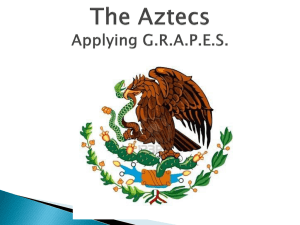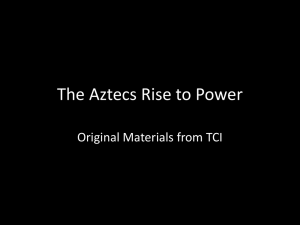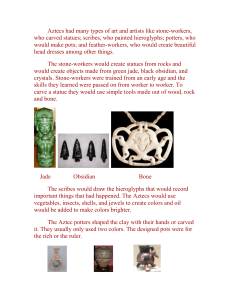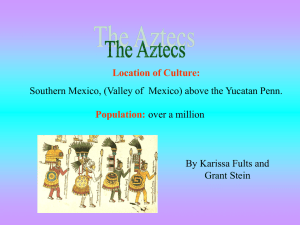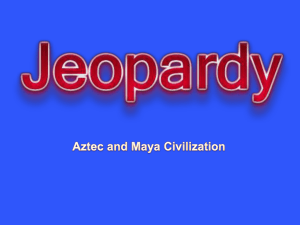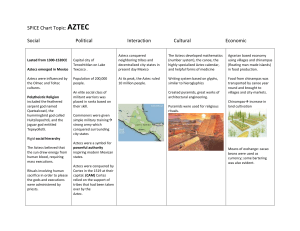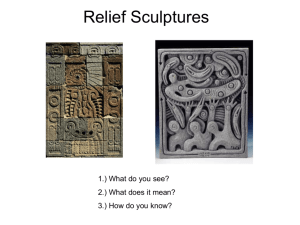Aztec Reading
advertisement
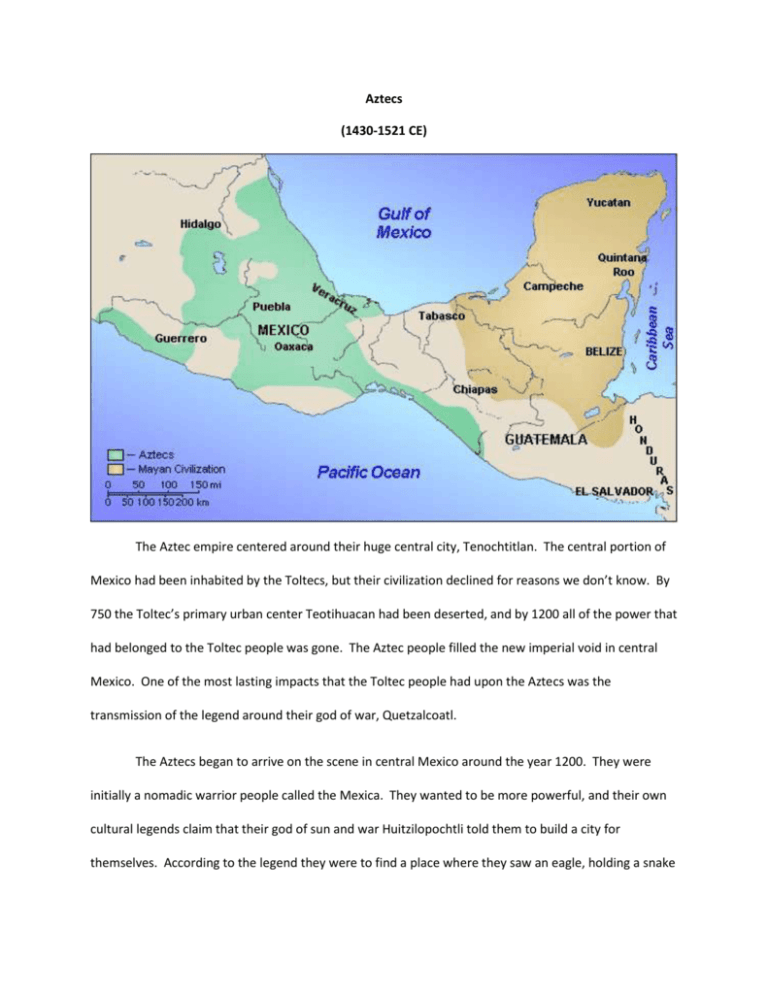
Aztecs (1430-1521 CE) The Aztec empire centered around their huge central city, Tenochtitlan. The central portion of Mexico had been inhabited by the Toltecs, but their civilization declined for reasons we don’t know. By 750 the Toltec’s primary urban center Teotihuacan had been deserted, and by 1200 all of the power that had belonged to the Toltec people was gone. The Aztec people filled the new imperial void in central Mexico. One of the most lasting impacts that the Toltec people had upon the Aztecs was the transmission of the legend around their god of war, Quetzalcoatl. The Aztecs began to arrive on the scene in central Mexico around the year 1200. They were initially a nomadic warrior people called the Mexica. They wanted to be more powerful, and their own cultural legends claim that their god of sun and war Huitzilopochtli told them to build a city for themselves. According to the legend they were to find a place where they saw an eagle, holding a snake in its mouth, perching on a cactus. They found just such a place on an island in the middle of Lake Texcoco. In 1325 they founded Tenochtitlan. Through building alliances and conquering neighbors the Aztec empire had grown to include a population of somewhere between 5 and 15 million people by 16th century. They were a very militaristic society, and their funding for the empire came from tributes that the vanquished had to pay to them. They exerted influence over a great deal of territory, but in many cases the rulers of the defeated people still exercised control over their territory. They would simply have to be loyal and consistent in their payments of maize, gold, cacao, jade, cotton, or other products. If a people whom the Aztecs defeated decided that they did not want to continue paying tributes the Aztecs would come in force, destroy the city, and either capture or annihilate all of the people. In many cases these conquered groups would have to send soldiers to help the Aztecs in their conquests. If the soldiers were good the cities were rewarded. By doing this the Aztecs made them not simply subjects of the empire but also a part of it. Aztec society was made up of people from three relatively fixed and distinct classes. The noble class included military commanders, rulers and other governing officials, and priests. The nobles were often capable of owning huge estates, and in many cases their lives were very luxurious. The middle of the Aztec classes was made up of common people. This class would have included soldiers, craftsmen, merchants, and farmers (only those that owned the land they worked). In many cases the merchants could be very wealthy, but they were endowed with rights to upward social mobility. The lowest class in Aztec culture was made up entirely of slaves. The slaves in Aztec culture were primarily acquired through conquest. The armies would bring back captives to constantly restock the empires slave population. Slaves would be used for many different tasks. There was one person who was higher than the richest noble, the emperor. An Aztec emperor’s authority was unquestionable. Anyone who came into his presence would have to do so with bare feet and downcast eyes. If some estimates are correct, by the early 16th century the population of the city of Tenochtitlan had swelled to 400,000. This would make the city larger than any European metropolis of the same time period, but some estimates say the population was no higher than 250,000. It remained in its location on the island in the middle of Lake Texcoco, but engineers had built causeways that connected city and shore. In the area immediately surrounding the lake there were many smaller towns. The result was a thriving metro-Tenochtitlan area. In the marshes on the edge of the lake there were agricultural plots called chinampas. They were so fertile and productive that they grew enough food to support the huge Tenochtitlanian populace. The goods grown there were transported in canoes and sold at the tremendous Tlatelolco market in the center of the island city. Also in the center of the city was a highwalled complex that contained the palace, other government structures, and two pyramids upon which the primary temples perched (those of the rain god and the sun god). Aztecs were polytheistic. There were temples for somewhere in the neighborhood of 1000 gods. Quetzalcoatl had been adopted from Toltec religion. The Aztecs believed that Quetzalcoatl had been banished and forced to sail on his raft made of snaked east across the ocean. The legend said that he would return. Among the many appearances of Quetzalcoatl is one where he looks like a bearded pale-skinned man. In 1519 when the Spanish conquistadors led by Hernan Cortes landed in Mexico it is possible that the Aztecs initially thought that this legend was coming to pass. The truth was that Cortes had heard of the large and wealthy Aztec city, Tenochtitlan. His only mission was to conquer. He had many advantages: better weapons, better armor, horses, war dogs, small pox (the Aztecs had no immunity), and many local tribes who hated the Aztecs and were happy to fight alongside the Spanish. These advantages were too much for the Aztecs to defeat, and by August of 1521 the Aztec Empire had fallen.

